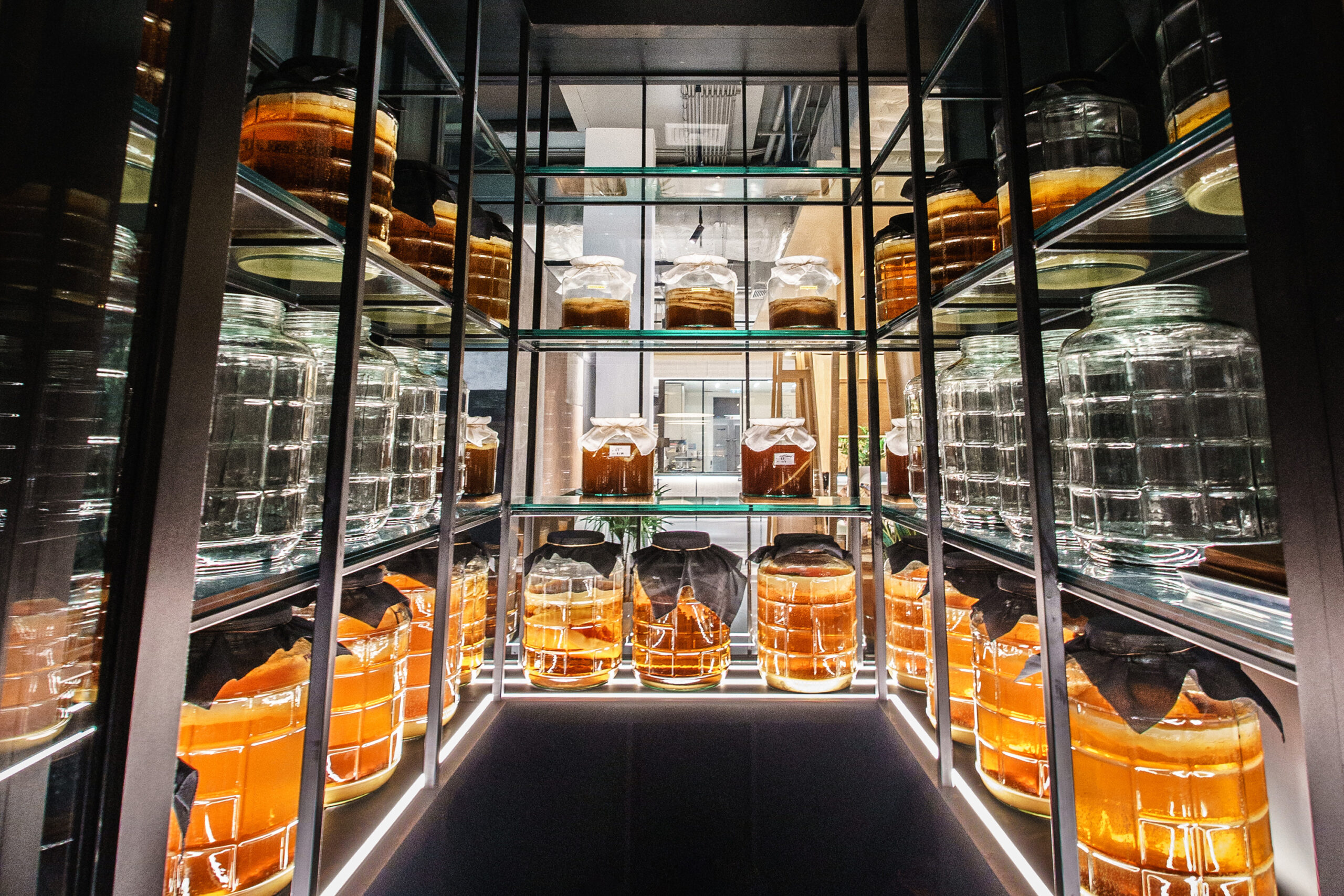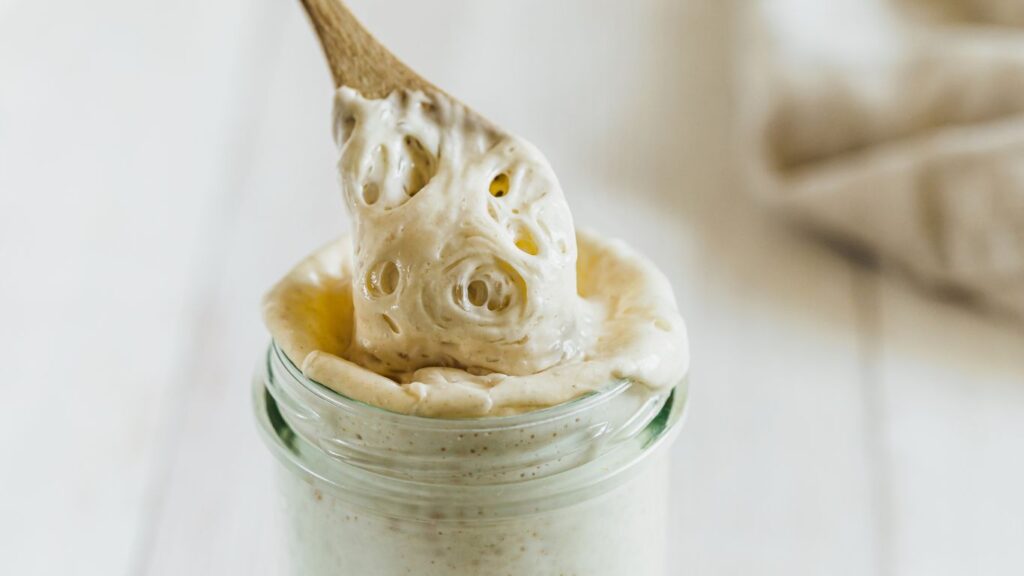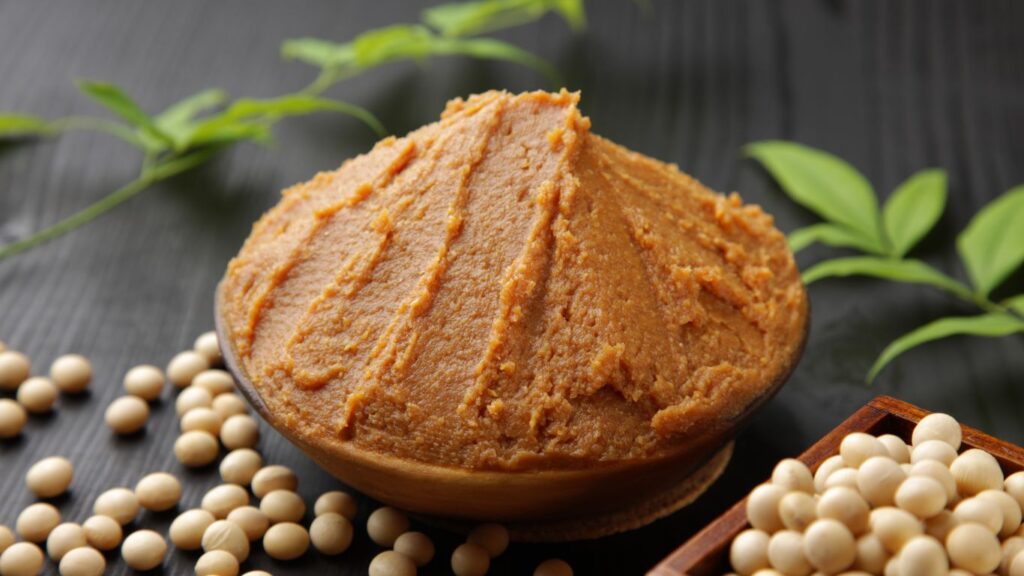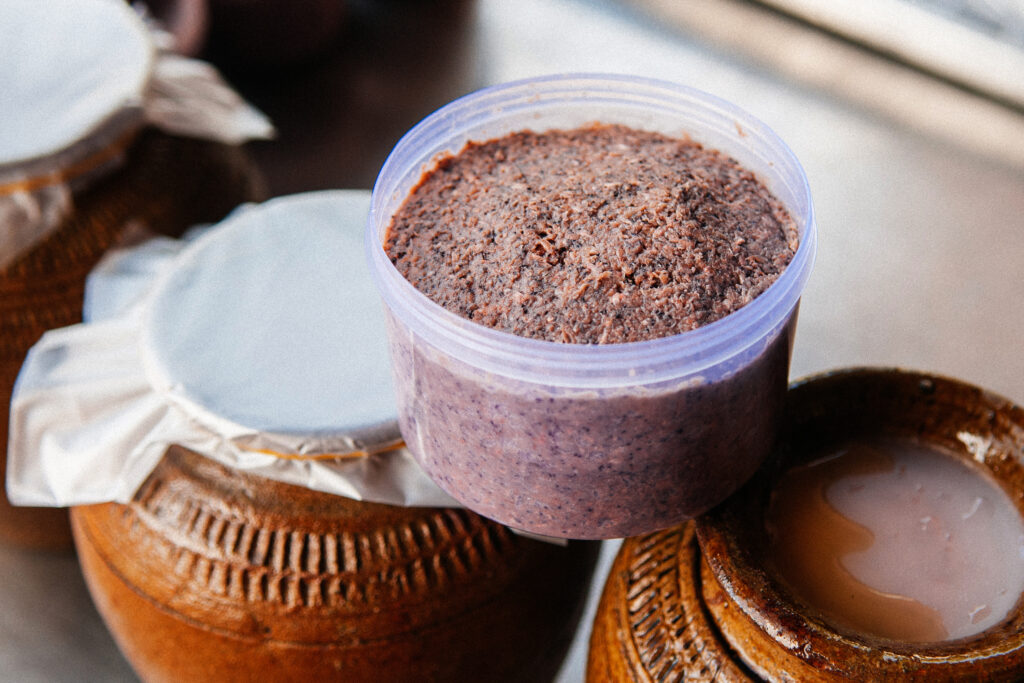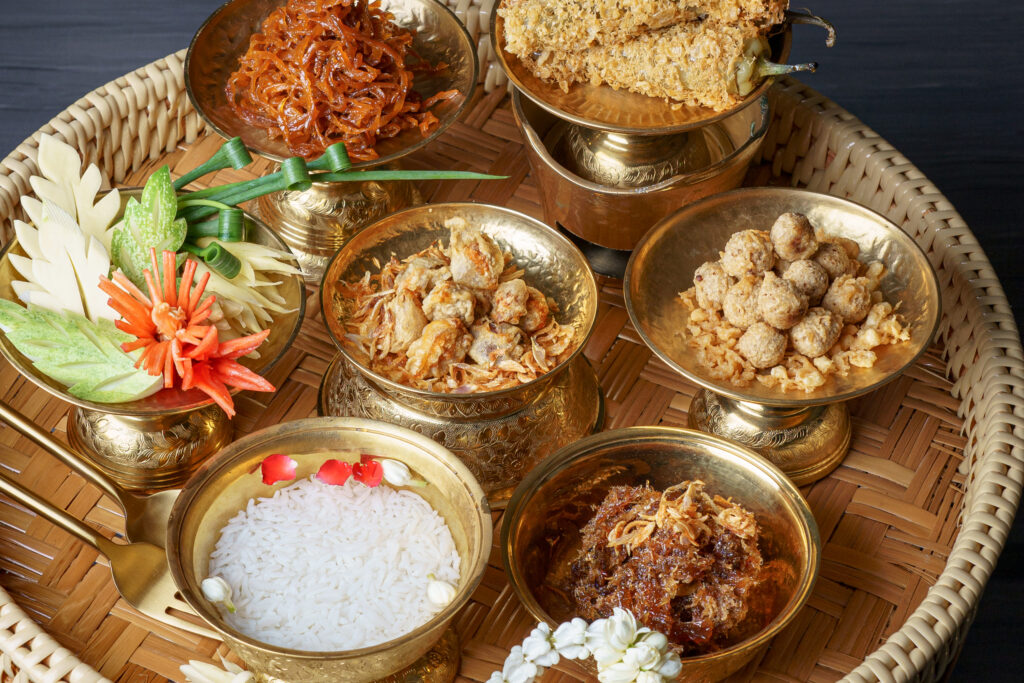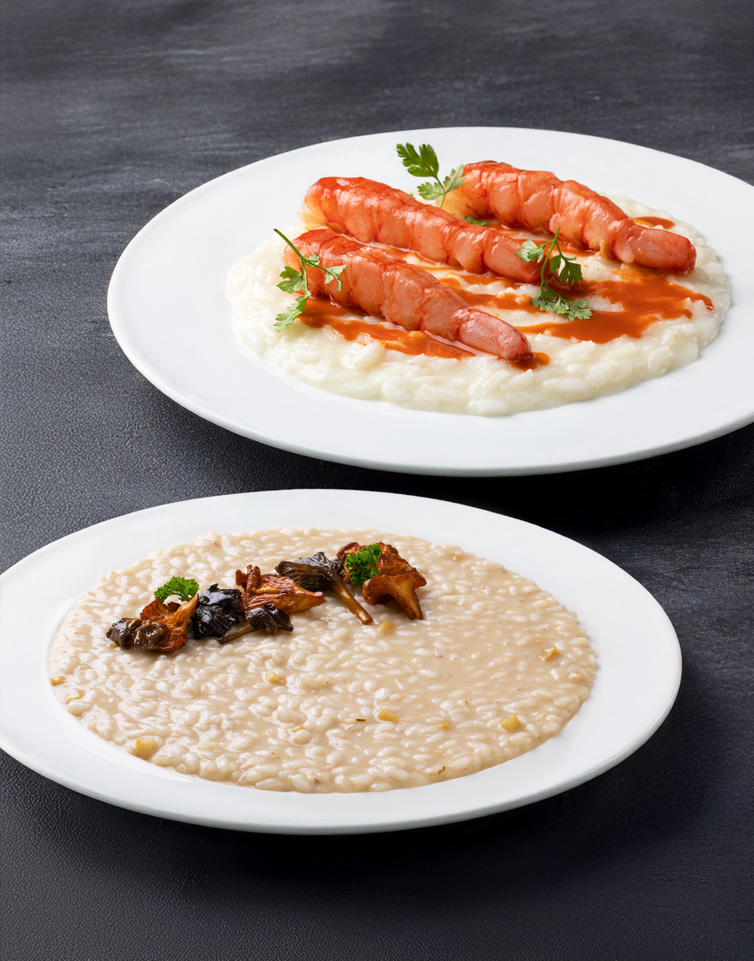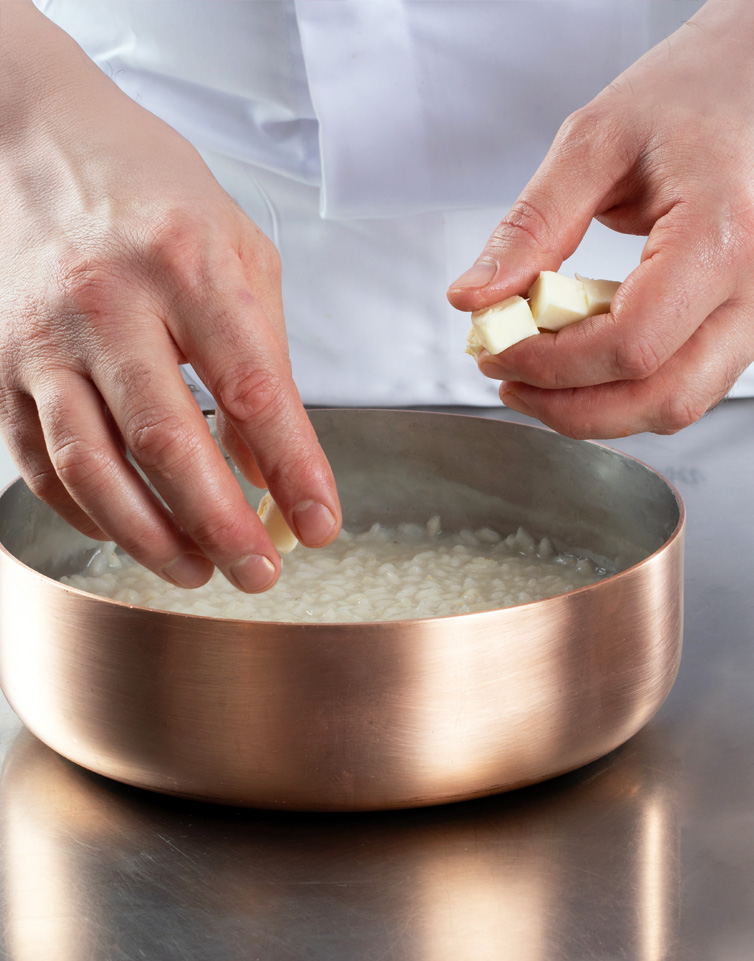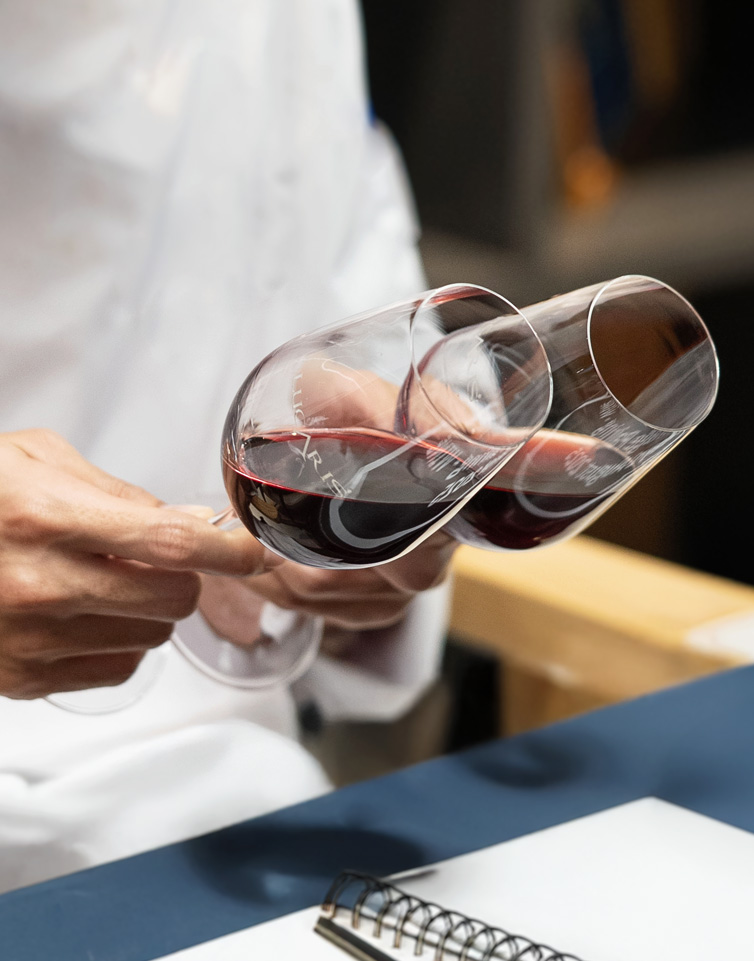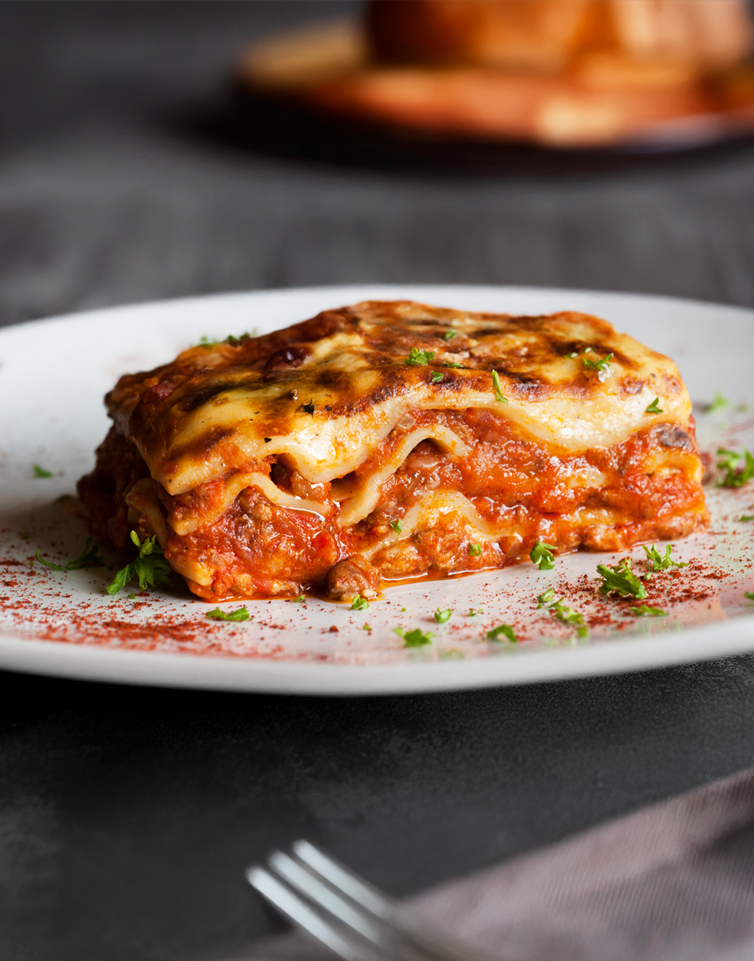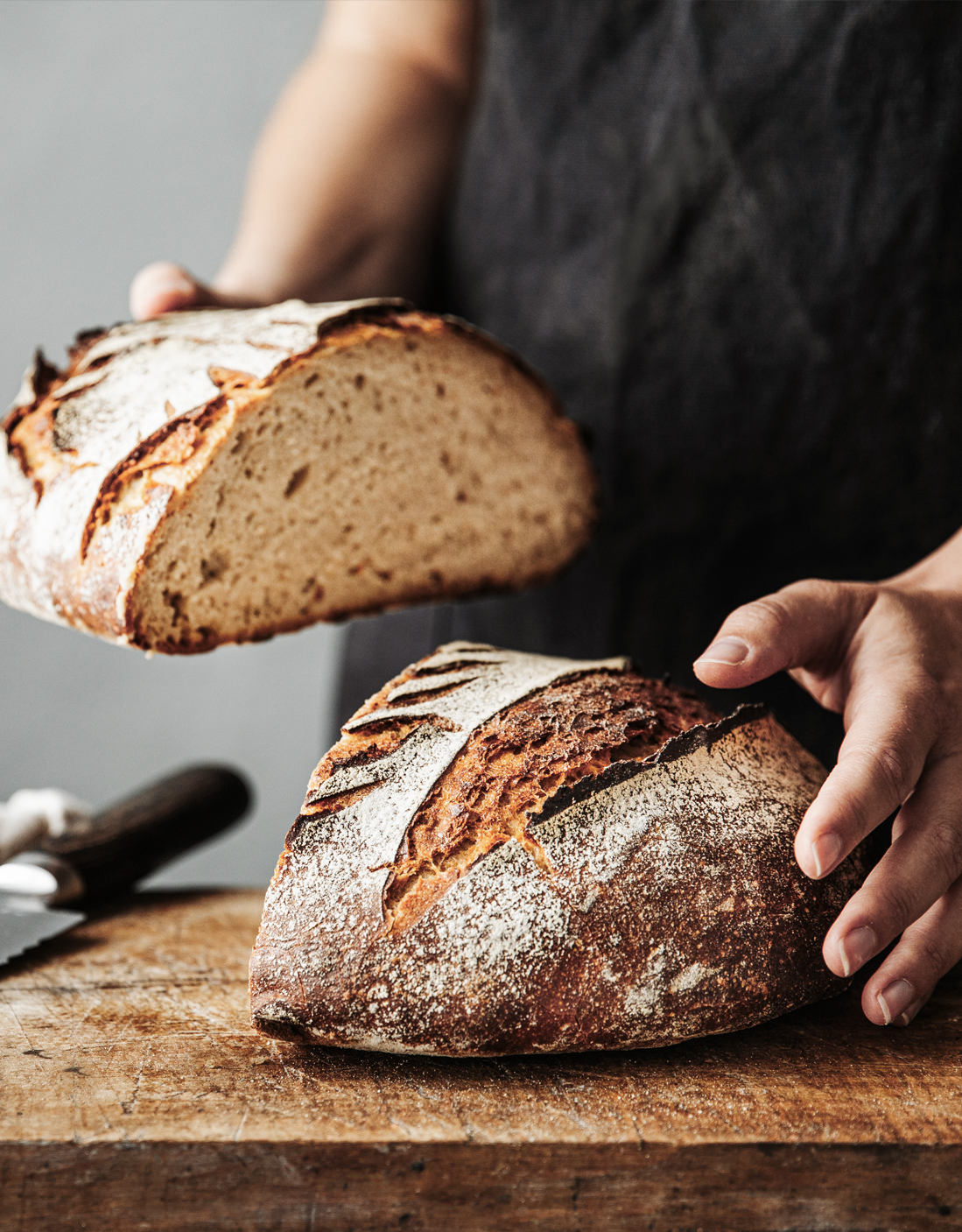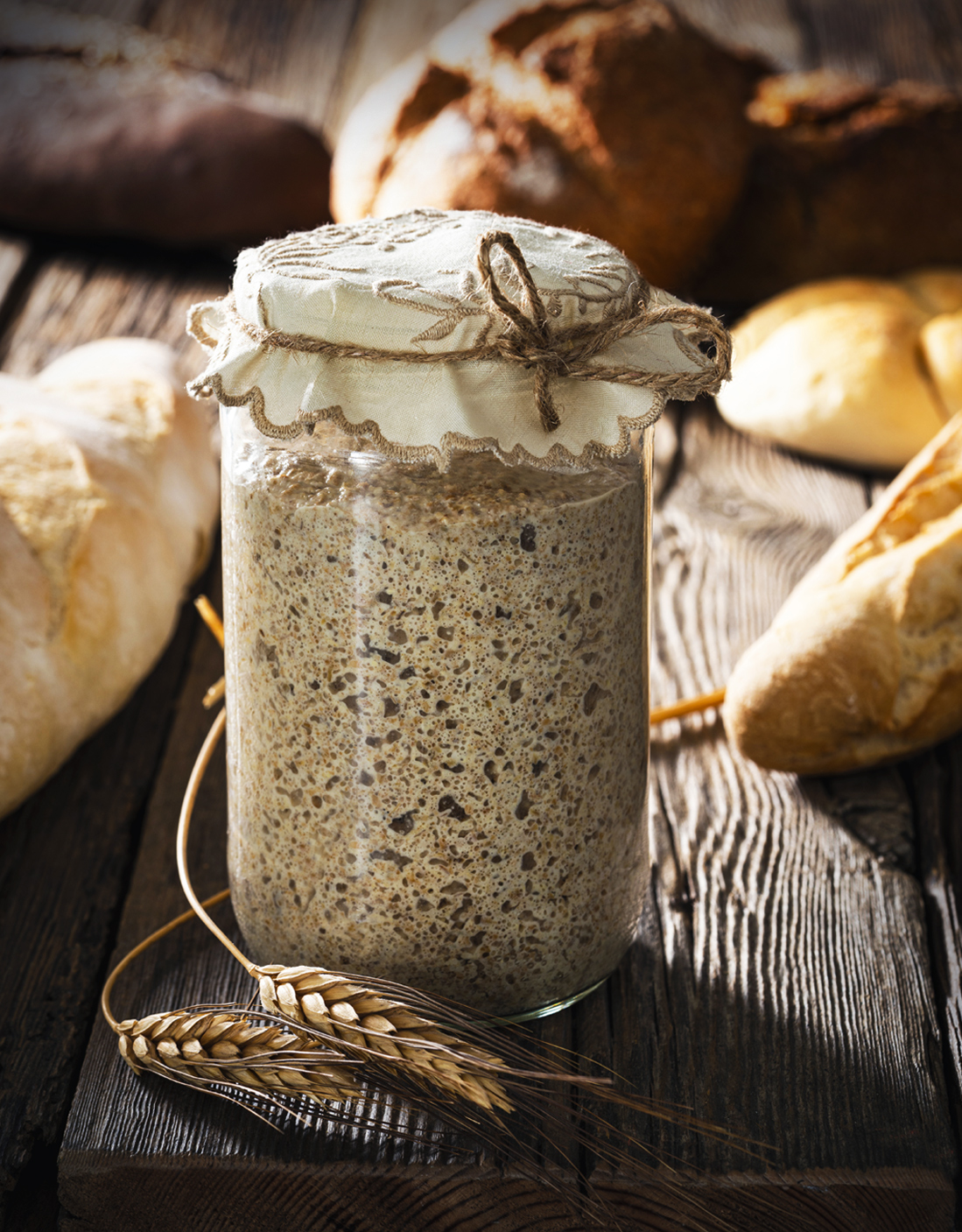The Magical – and Tasty – Chemistry of Fermentation
- 13 February 2025
a quest for the next culinary prodigy and business partner, featuring 8 top chefs from Southeast Asia. The competition also includes Professor Woody and Professor Wutthisak Simhong from Dusit Thani College, Bangkok, who are joining the mission to discover culinary geniuses.
But what is Scoby?
If you walk around our Test Kitchen you might notice many jars, filled with a yellow liquid and a cotton coat on top. This is our homemade Kombucha! Likely to be from Northern Asia, this acid beverage was known to be a longevity elixir. In China, “Lingzhi”, or even Russia “Чайный гриб“, the Scoby is referenced as a mushroom. It is actually a gelatinous pellicle made up of yeast and bacteria that floats on the surface of fermenting kombucha, which gives another name to Kombucha ‘tea mushroom’.
How wonderful Fermentation is? Does “Yeast” ring a bell?
Koji from Japan
Another fascinating magical chemistry is the process of Koji, which is highly used in Japan. Koji is made from inoculated grains (soybeans or rice). Just like Kombucha, you need Koji spores – which might come from the previous preparation – grains and some time to ferment. The mold will then grow and turn into a white blanket, first over the grains, before it metabolizes starches and proteins. This process is alimented by a fungus called Aspergillus Oryzae. Although it doesn’t sound appealing it’s essential to give miso soup it’s “umami” taste. Koji is the keystone of the Japanese cuisine, subliming many dishes with its profound and salty flavor.
Kapi from Thailand
Last but not least, very much used in Southern Thailand: the Kapi. Have you ever had the chance to try this shrimp paste? While spices will wake your senses up, the iodic tones will take you overseas. All this, yet again, thanks to fermentation.
Quite an interesting process isn’t it! And not as strange as one could think. The operating fermentation for kapi is called lactic acid. Favorized by the low oxygen in the container, the bacteria will break down the proteins in the shrimp and release umami and complex flavor. Depending on your recipe, it might need to ferment for a week or a few months.
It will surely turn into this tasty paste as long as you keep an eye on the process: natural fermentation needs a lot of attention. Popular all over Asia, kapi can take different names and have slightly different recipes. But whether it’s “Belacan” in Malaysia or used as a topping for green mango in the Philippines, shrimp paste is the boost your dish needs to deliver all its aroma.
Now, isn’t patience the most beautiful utensil in any cuisine? Fermentation lets the flavors grow and transform a simple dish into an explosion of taste along a trip into history, biochemistry and gastronomy. Enjoy travelling from your plate!
Resources : NCBI, NCBI, Sciencedirect, Sciencedirect
Find out more about this captivating process with our classes!
We are waiting for you!
-
Risotti: Advanced Techniques
Short Courses ฿12,900.00This product has multiple variants. The options may be chosen on the product page -
Old World vs New World: A Comparative Wine Experience
Short Courses ฿4,900.00This product has multiple variants. The options may be chosen on the product page -
Lasagna Layer by Layer
Short Courses ฿6,900.00This product has multiple variants. The options may be chosen on the product page -
Full Sourdough Class
Short Courses ฿14,500.00This product has multiple variants. The options may be chosen on the product page -
Thai Technique – Stir Fried #1
Short Courses ฿3,900.00This product has multiple variants. The options may be chosen on the product page -
Udon
Short Courses ฿11,500.00This product has multiple variants. The options may be chosen on the product page
